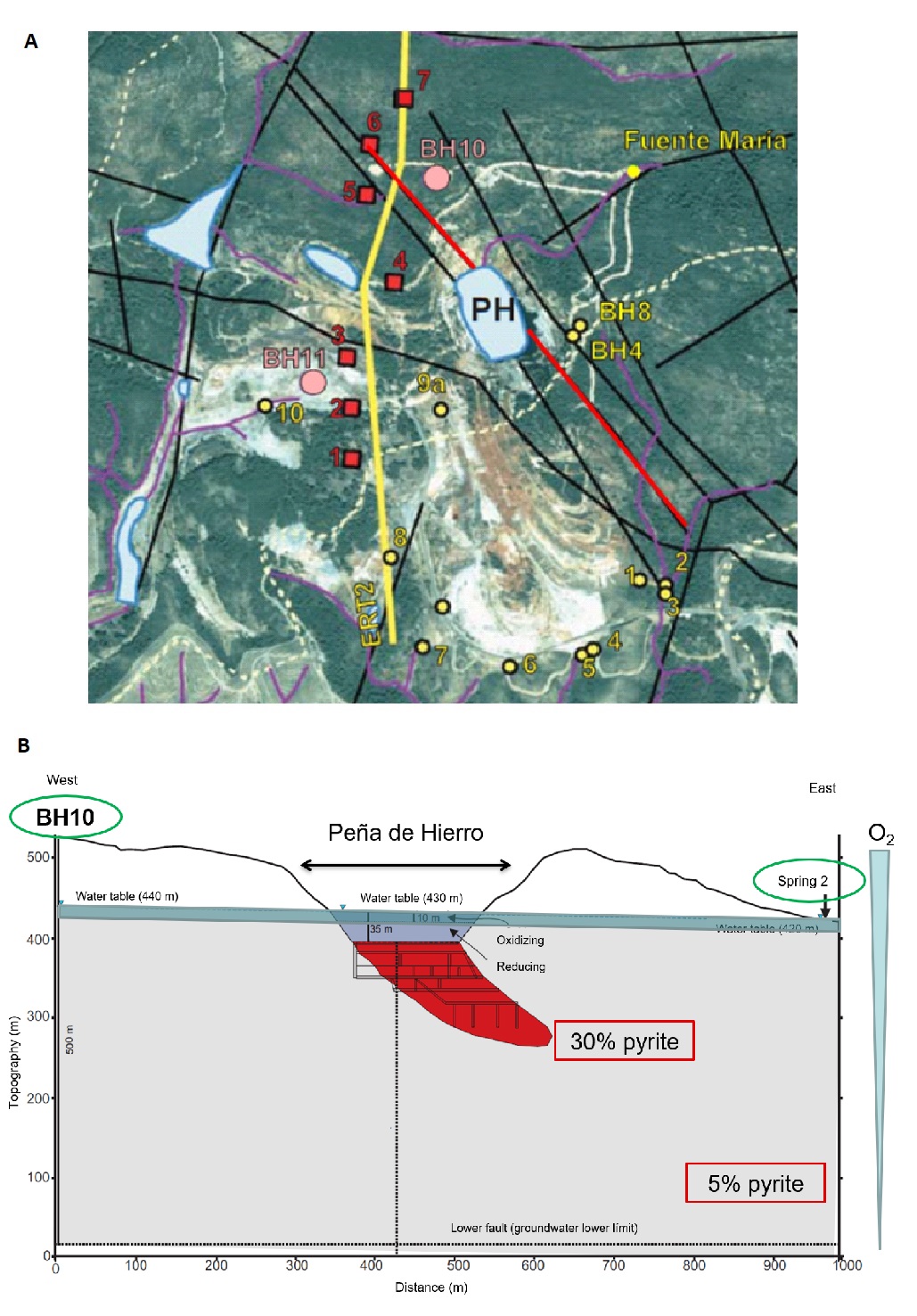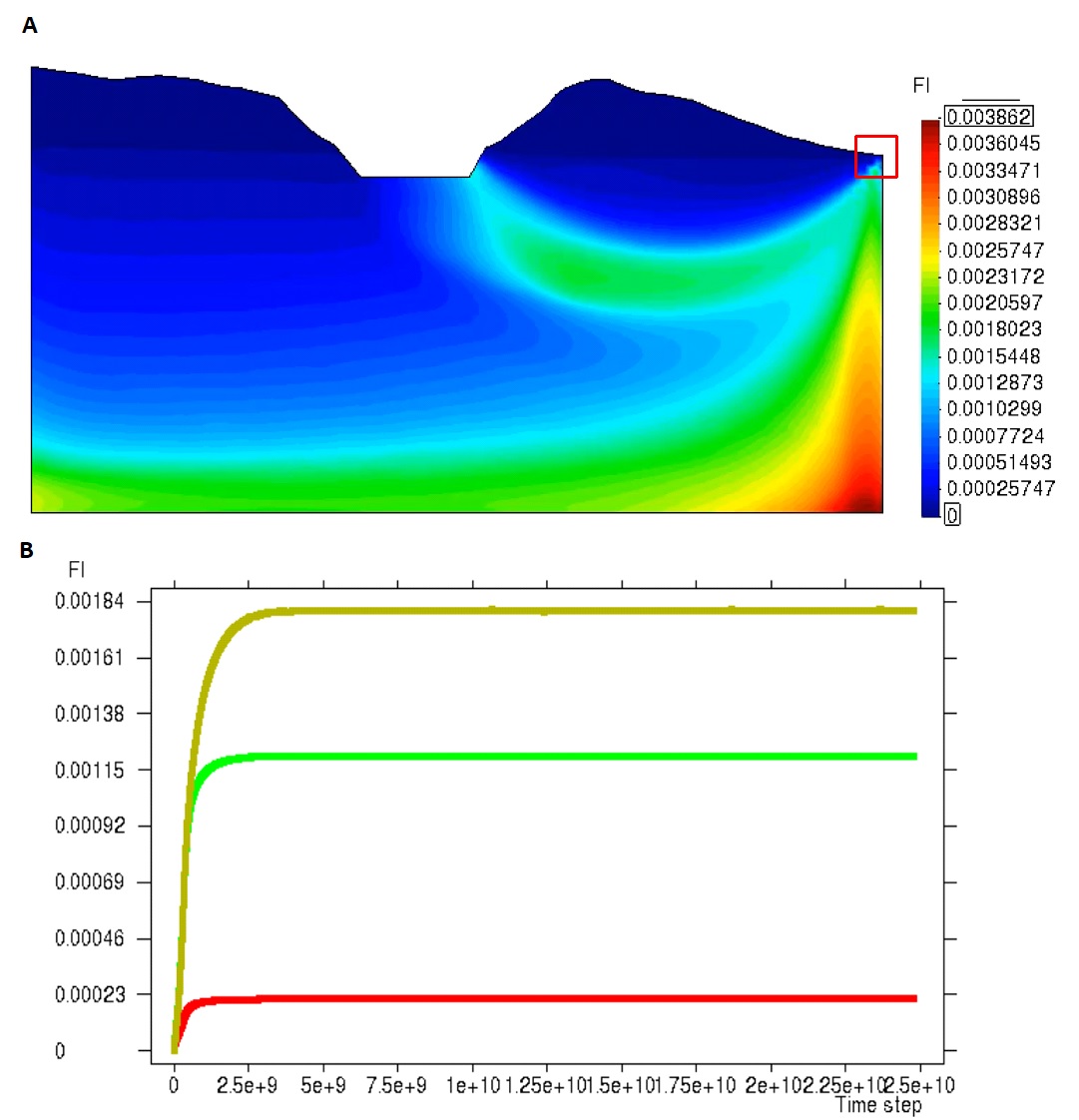- 1Dto. Ingeniería Térmica y Fluidos, Universidad Carlos III de Madrid, Leganés, Spain (marherre@ing.uc3m.es)
- 2Centro de Astrobiologia (CSIC-INTA), Planetology and Habitability, Torrejón de Ardoz, Spain (iherreros@cab.inta-csic.es)
- 3Dto. Biología y Geología, Física y Química Inorgánica, Universidad Rey Juan Carlos, Móstoles, Spain
- 4Centro de Biología Molecular Severo Ochoa (CSIC-UAM), Cantoblanco, Madrid, Spain
- 5State Key Laboratory of Lunar and Planetary Sciences, Macau University of Science and Technology, Macau, PR China
- 6CNSA Macau Center for Space Exploration and Science, Macau 999078, PR China
- 7Contributed equally to this work
1. Introduction
Río Tinto (Huelva, Spain) is one of the largest natural acid environments in the world and a mineralogical analog of Mars. The peculiarities presented by the system are due to the high concentration of ferric ion (Fe+3) contained in its waters, which is responsible not only for its characteristic red color, but also for maintaining a constant acidic pH (≈2.3) along the almost 100km length of the river [1]. Results obtained in the MARTE and IPBSL drilling projects suggested that the origin of the high concentration of Fe+3 is due to the metabolic activity of a subsurface "bioreactor" which is capable of dissolving pyrite, the main metal sulfide in the Iberian Pyrite Belt (IPB) [2].
In order to verify this hypothesis, we have developed a numerical model to analyze the hydrodynamic behavior of the groundwater inside one of the geologic faults of the system as well as the generation and transport of the Fe+3 in solution. As input parameters for the model, we have used the hydrogeological (topography, mineralogy, water table...), physicochemical (iron concentration, oxygen presence, porosity...) and microbiological (pyrite dissolution rate mediated by microorganisms) data obtained after years of study of the ecosystem of Río Tinto [2].
2. Methods
2.1. Biological model
To calculate the iron release mediated by microorganisms along the fault (marked in red in Figure 1A), three different scenarios were considered depending on their pyrite content and oxygen concentration: case 1) oxidizing layer; case 2) anaerobic zone of disseminated pyrite; and case 3) anaerobic zone of massive pyrite (see Figure 1B).

Figure 1: A) Satellite image of the Peña de Hierro area. The locations of the main faults (black solid lines), as well as those of the different acidic springs (yellow dots), are shown (image modified from [3]). B) Section of the fault studied. In blue, case 1. In grey, case 2. In red, case 3.
The contribution of iron to groundwater due to the biological action of subsurface microorganisms was measured by incubating natural surface and subsurface samples, the latter obtained during the IPBSL project, with water and monitoring iron release over time. Negative sterile controls were carried out in parallel.
2.2. Hydromechanical model
The numerical model used to simulate the generation and transport of Fe+3 in the groundwater of Río Tinto consists of two phases:
- Modeling the flow movement inside the porous medium by solving the seepage equations [4].
- Once the water velocity has been determined, the generation and transport of Fe+3 is modeled by solving the advection-diffusion equations with a source term.
3. Results
The equations considered for the hydromechanical model are solved numerically by using the Finite Element Method. To this end, a non-structured 2D mesh of 15473 linear triangular elements is used to model the sectional area of the selected geologic fault (marked in red in Figure 1A). After solving the seepage equations in the sectional area depicted in Figure 1B using the physical parameters shown in Table 1, the pressure field is determined and thus, the water velocity can be calculated.
Table 1: Input parameters for the model

Measurements from the incubation of natural rock samples with water in the different fault zones (Table 1) along with the water velocity calculated using the seepage model [4] are used as an input to model the generation and transport of Fe+3 in the subsurface of Río Tinto. The output of this model provides with the space distribution of the concentrations of Fe+3 in the sectional area of the fault, as shown in Figure 2A.

Figure 2: A) Space distribution of the concentrations of Fe3+ (kgFe/kgH2O) calculated by the model. B) Evolution in time (s) of the concentration of Fe3+ (kgFe/kgH2O) in the vicinity of spring 2 (red square in 2A)
The numerical results for the concentrations of Fe+3 as a function of time in the vicinity of the natural spring 2 (see Figure 1A) are shown in Figure 2B, being the average value 1.01e-3 kgFe/kgH2O. It can be observed that the concentration of Fe+3 quickly stabilizes, keeping constant in time through the years. This is consistent with the experimental average values of 9.87e-4 kgFe/kgH2O measured at spring 2, with suggests a relative error for the model-predicted value of about 1.94%.
4. Conclusion
Our results suggest that it is mathematically feasible that the Fe+3 measured in one of the natural springs of Río Tinto is a consequence of the activity of both aerobic and anaerobic microorganisms inhabiting the IPB subsurface, which supports the hypothesis of the biological origin of Río Tinto.
Acknowledgements
This work is funded by the AEI (Spanish Research Agency), project MDM-2017-0737. We would like to gratefully acknowledge Universidad Carlos III de Madrid (Dto. Ingeniería Térmica y Fluidos) for the financial support.
References
[1] Amils, R., et al. (2008). Subsurface geomicrobiology of the Iberian Pyritic Belt. Microbiology of extreme soils. Springer, Berlin, Heidelberg: 205-223.
[2] Escudero Parada, C. (2018). Fluorescence microscopy for the in situ study of the Iberian Pyrite Belt subsurface geomicrobiology. Dissertation Thesis, UAM.
[3] Gómez-Ortiz, D., et al. (2014). Identification of the subsurface sulfide bodies responsible for acidity in Río Tinto source water, Spain. Earth and Planetary Science Letters 391: 36-41.
[4] Herreros, M.I., et al. (2006). Application of level-set approach to moving interfaces and free surface problems in flow through porous media. Computer Methods in Applied Mechanics and Engineering, 195 (1–3): 1-25.
How to cite: Herreros, I., Escudero, C., Gómez-Ortiz, D., Rodríguez, N., Martínez, A., Suárez-Gordo, A., Fernández-Remolar, D., Gómez, F., and Amils, R.: Modeling the origin of Río Tinto, Europlanet Science Congress 2022, Granada, Spain, 18–23 Sep 2022, EPSC2022-118, https://doi.org/10.5194/epsc2022-118, 2022.

